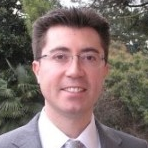Metal Oxides in Energy Technologies
A special issue of Applied Sciences (ISSN 2076-3417). This special issue belongs to the section "Nanotechnology and Applied Nanosciences".
Deadline for manuscript submissions: closed (31 December 2021) | Viewed by 6011
Special Issue Editors
Interests: photovoltaics; metal oxides; perovskites; thin film processing
Interests: functional materials for energy conversion and optoelectronics; 2D materials
Interests: nanostructured materials; rare-earth ions; luminescent materials; optical films and coatings; materials for energy applications; solar cells; lighting
Special Issues, Collections and Topics in MDPI journals
Special Issue Information
Dear Colleagues,
Metal oxides (MOs) are cutting-edge materials in next-generation energy devices. Due to their chemical stability, physical and electronic versatile properties, ease of processability, MO applications span from photovoltaics to energy concentrators/accumulators and photocatalytic systems for the production of solar fuels. The interest in these materials emerged when the effective chemical doping of insulating oxides was made possible, leading to the realization of the key materials for (opto)electronics named transparent conducting oxides (TCOs). This fundamental step forward has allowed the integration of MO into the semiconductor manufacturing industry, with multiple uses in diodes, PN junctions, LEDs, and solar cells. In particular, last-generation ultra-cheap solar cells have gained great advantages from the use of TCO as electrodes, due to their favorable energetic alignment for both electron and hole collection, leading to power-to-conversion efficiencies similar to established silicon-based technologies. MOs band engineering can further be exploited for promoting highly sustainable photocatalytic processes like water splitting or CO2 reduction, which will allow the future transition of our society to a fully circular economy.
Additionally, metal-doped oxides can also play an important role in energy applications. Among them, rare-earth dopants are widely used for their optical properties in lasers, lighting and solar cells. Rare-earth ions have been used in phosphors for efficient and high-quality lighting devices, as well as in spectral conversion coatings to improve the matching of the solar incoming radiation with the solar cell’s absorption, increasing the overall photon-to-current conversion efficiency.
Within a similar scenario, we are convinced that MOs represent fundamental components of research in energy technologies and, therefore, this Special Issue will collect recent, outstanding contributions in different topics, including (but not limited to) MOs application in photovoltaics (with both established and novel concepts), solar-to-thermal conversion, photocatalysis, thermoelectrics, energy storage and lighting. In particular, manuscripts focusing on MO-based nanostructured semiconductors, binary and n-ary systems, perovskite-based structures, 2D, 1D, and 0D materials, heterojunctions, chemical and physical doping protocols, advanced optical, electrical properties, and morphological characterization techniques will be considered.
Original papers, communications, and topical/extended reviews are welcome to this Special Issue.
Dr. Francesco Lamberti
Dr. Teresa Gatti
Dr. Francesco Enrichi
Guest Editors
Manuscript Submission Information
Manuscripts should be submitted online at www.mdpi.com by registering and logging in to this website. Once you are registered, click here to go to the submission form. Manuscripts can be submitted until the deadline. All submissions that pass pre-check are peer-reviewed. Accepted papers will be published continuously in the journal (as soon as accepted) and will be listed together on the special issue website. Research articles, review articles as well as short communications are invited. For planned papers, a title and short abstract (about 100 words) can be sent to the Editorial Office for announcement on this website.
Submitted manuscripts should not have been published previously, nor be under consideration for publication elsewhere (except conference proceedings papers). All manuscripts are thoroughly refereed through a single-blind peer-review process. A guide for authors and other relevant information for submission of manuscripts is available on the Instructions for Authors page. Applied Sciences is an international peer-reviewed open access semimonthly journal published by MDPI.
Please visit the Instructions for Authors page before submitting a manuscript. The Article Processing Charge (APC) for publication in this open access journal is 2400 CHF (Swiss Francs). Submitted papers should be well formatted and use good English. Authors may use MDPI's English editing service prior to publication or during author revisions.
Keywords
- Metal oxides
- rare-earth doped oxides
- semiconductors
- chemical doping
- transparent conductive oxides
- energy applications







